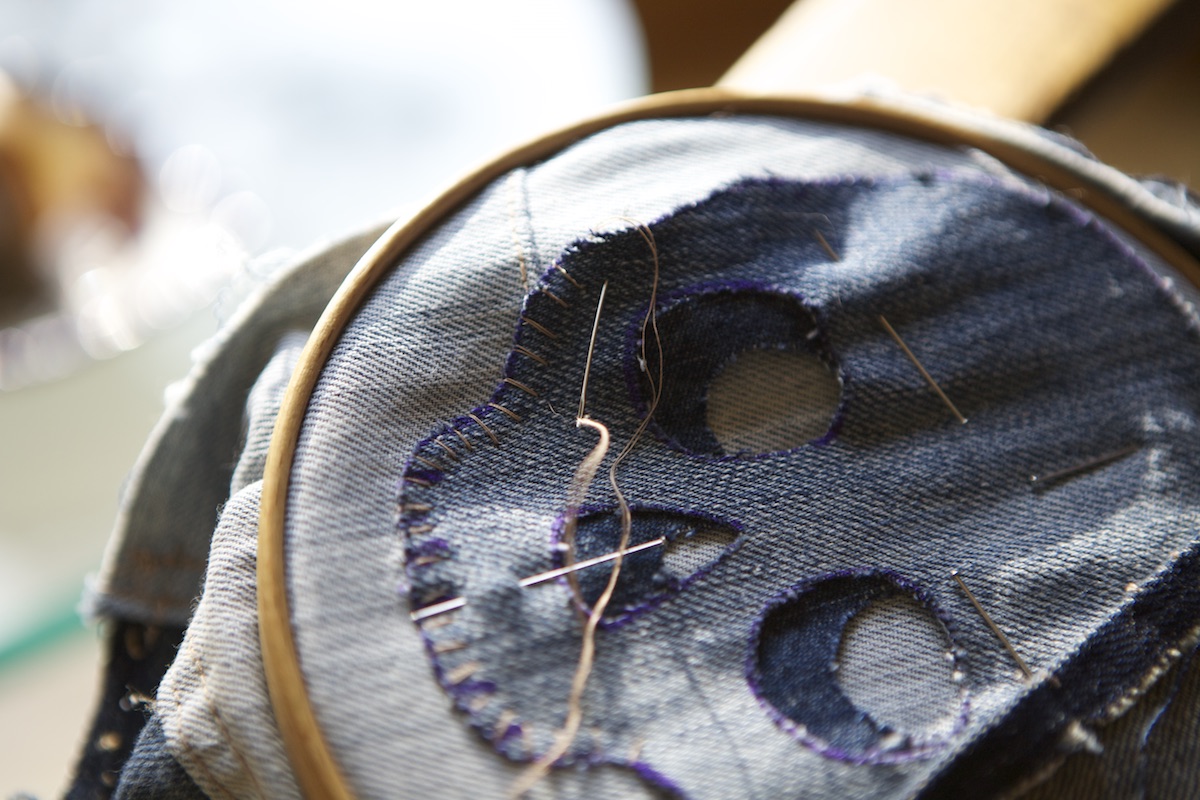A few months ago I wrote a post about how I repaired a vintage quilt for a client by using 3 generations of her family’s clothes. Since then, I have been commissioned with a few quilts from people wanting to restore family heirlooms. Here’s the most recent restoration completed before Christmas.
The brief
This beautiful quilt was commissioned by the owner’s mother for his birth. It was hand stitched about 50 years ago by Mennonite women from Kitchener-Waterloo, Canada. The quilt in question is a Dresden Block quilt, which needed quite a bit of repair. Practically all of the blue binding sewn between each block and the Dresden plates themselves had disintegrated. As a result, many of the blocks were coming undone and barely holding on. Because the backing was also worn down and torn in a few areas, the first priority was to add a new backing and secure the blocks.

Because I’m a big fan or re-purposing fabric, I asked my client to find pieces of clothing from the members of her family in order to repair the quilt. Luckily, she not only had an assortment of her kid’s old clothes that she had kept, but also a stash of fabric remnants she had purchased over the years, that she loved but had never been used. Among the fabric collection, there was a large fitted bed-sheet that I used as backing and turquoise fabric that was perfect replace the tattered binding.
The Repair
My first step was to prepare the backing. Because it was a fitted bed-sheet, once I removed the elastic band and unpicked the corners, each corner has a missing square of fabric. I used the extra fabric from the width of the sheet fill those missing squares.

I then proceeded to baste the loose blocks using a running stitch and secured them back in place with pins.

To repair the binding that linked the blocks together, I tore the turquoise fabric into strips and applied them over the tattered binding. I used a navy mercerized cotton thread for the topstitching to add contrast and white for the bottom to match the new backing. For more information on why I prefer to use cotton thread instead of polyester thread, check out my blog post on circularity.

Designing for budget and thinking ahead
Replacing the backing and repairing the binding between each plate was the biggest priority. That said, I did have a bit of time left from the allotted budget to replace two flowers. Taking into account that my client does know how to sew, I planned out a design that she could continue to work on over time.

Among her textile collection was a series of black flowers that she had designed and screen printed. I felt they would fit beautifully as a center of the flower. Since she only had four of these screen prints, I used two for the flowers I made and placed them in the center of the quilt. She can choose in the future to add the other two vertically, or horizontally so they are centered and then use the same turquoise fabric of the binding for the center of the other flowers to replicate the original design.

I really like the contrast of old and new on a restored quilt. What was worn to tatters over time has now been renewed into a beautifully shabby chic quilt. Now this family heirloom, which was created 50 years ago, can live on and be infused with new memories from a second generation.

If you’re curious to see the first quilt I mended, check out the post I wrote here.
Also, don’t miss out on Modern Mending news! You can now sign up to our mailing list and get a notice when a new post, tutorial, pattern or promotion is available. Scroll down to register.
Happy Mending!

